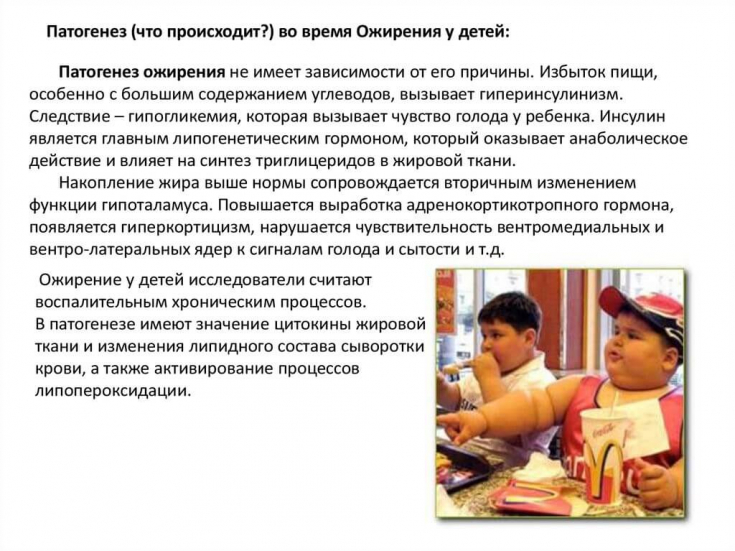Obesity can be considered an epidemic of the XXI century.
According to the latest statistics, more than 30% of the world's population is diagnosed with obesity.
This problem is most acute in economically developed countries: USA, Canada, Germany, where almost every second inhabitant is obese.
In recent years, obesity has become a topical issue not only for adults, but also for children.
Find out in the article on estet-portal.com about the latest international guidelines for the treatment of obesity in children.
- The problem of obesity in children
- Modern approaches to the treatment of obesity in children
- Key recommendations for the treatment of obesity in childrenth
The problem of obesity in children
The problem of childhood obesity has recently reached a new level: over the past 20 years, the number of overweight children has doubled.
Experts say that rapid scientific and technological development and automation will lead to an increase in this indicator by several times.
Follow us on Instagram!
Obesity in childhood has a pronounced tendency to progress.
In 60% of cases, overweight in a child or adolescent in the future is transformed into severe somatic diseases:
- type 2 diabetes mellitus (DM2);
- arterial hypertension (AH);
- atherosclerosis;
- arthrosis;
- metabolic and endocrine disorders
- cholelithiasis;
- oncological pathology;
- cardiovascular complications;
- infertility.
What contributes to the development of type 1 diabetes
Obesity − this is a chronic polyetiological disease, which is characterized by excessive deposition of adipose tissue in various parts of the human body and leads to metabolic, neuroregulatory disorders and the development of m somatic consequences.

Modern approaches to the treatment of obesity in children
At the current stage of development, medicine cannot offer effective treatment for patients with severe obesity.
There is still no drug that would have a significant clinical efficacy in the fight against obesity. Therefore, the eyes of specialists are increasingly riveted to an effective method of treating obesity − bariatric surgery.
Bariatric Surgery − the field of surgery aimed at reducing excess body weight by performing operations on the organs of the gastrointestinal tract.
According to updated guidelines from the American Academy of Pediatrics, access to bariatric surgery should be increased for patients aged 13-18 with severe obesity.
Updated recommendations are based on multiple studies that have shown surgical efficacy for pediatric obesity.
For example, experts from the Children's Hospital of Colorado, USA (Children's Hospital Colorado), found that bariatric surgery allowed equally effective weight loss in both adult and juvenile patients.
In addition, adolescents were able to achieve greater remissions of comorbidities such as T2DM and AG.
Which type of obesity is the most dangerous
Key recommendations for the treatment of obesity in children
Clinicians should be aware that children and adolescents with severe forms of obesity (body mass index (BMI) ≥35 kg/m²) are at increased risk of developing:
- chronic liver diseases;
- type 2 diabetes;
- dyslipidemia;
- obstructive sleep apnea syndrome;
- orthopedic complications;
- mental disorders.
Pediatricians should therefore refer these patients to highly qualified multidisciplinary treatment centers for this condition, including medical facilities that provide bariatric surgery.

For parents, the best guideline in making a decision about surgery will be information about the efficacy, risks, benefits, and long-term effects of bariatric procedure.
Coordination of the pre- and postoperative periods should be carried out by the joint efforts of the pediatrician, the patient, the patient's parents, anesthesiologists and the operating team.
Clinical studies on the effectiveness of intermittent fasting
During the post-operative period, pediatricians should monitor the patient's health to detect cases of micronutrient deficiencies and, if necessary, − consider iron, folic acid, and vitamin B12 supplements.
In addition, post-operative monitoring includes observation of patients to identify psychological problems.







Add a comment